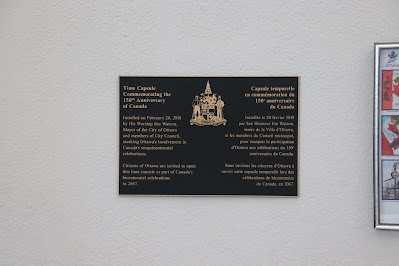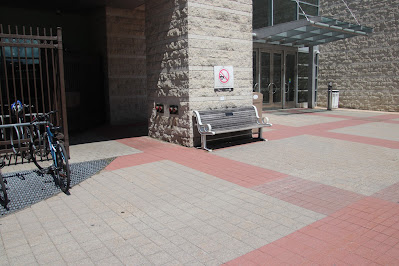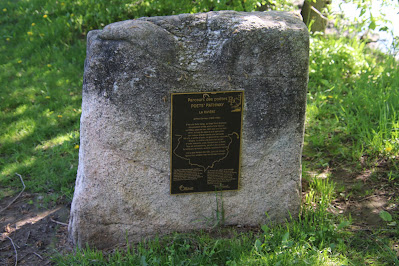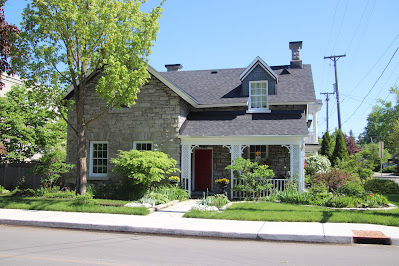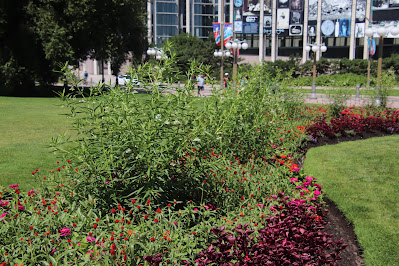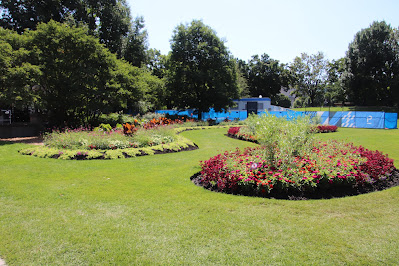The plaque about the Arctic Tundra occupies a place on the southeast corner of McLeaod Street and O'Connor Street on the grounds of the Canadian Museum of Nature.
Arctic Tundra
A unique and diverse ecosystem
Arctic plants are well-adapted to survive a short and cool summer with up to 24 hours of daylight.
Many species grow low to the ground, out of the harsh Arctic wind. Some grow as cushions, preserving heat inside a compact mass. Others are insulated with dense, woolly hair, or are able to turn just their flowers towards the sun, using their petals to catch the sun's heat.
As the climate of the North changes, so will the plants that grow there. Already researchers are finding shrubs such as the dwarf birch (Betula glandulosa) growing fuller, higher and larger than ever before. This "shrubification" of the Arctic is one of the first definitive effects of climate change on Arctic vegetation.
La toundra arctique
Un écosystème diversifié et hors du commun
Les plantes arctiques se sont adaptées aux été brefs et fais qui offrent jusqu'à 24 heures de lumière par jour.
De nombreuses espèces rampent au sol afin d'éviter les vents furieux de l'Arctique. D'autres forment des coussins, qui conservent la chaleur au sein de leur masse compacte. Plusieurs sont dotées de poils denseset duveteux qui les protègent du froid alors que certaines tournent leurs fleurs vers le soleil afin que leurs pétales captent la chaleur des rayons.
À mesure que le climat du Nord se modifie, la flore qui y pousse se transforme. Déjà, les chercheurs observent que certains arbusted comme le bouleau glanduleux (Betula glandulosa) sont plus hauts, plus gros et plus fournis qu'avant. Cette « arbustification » est un des premiers effets évidents des changements climatiques sur la végétation arctique.





